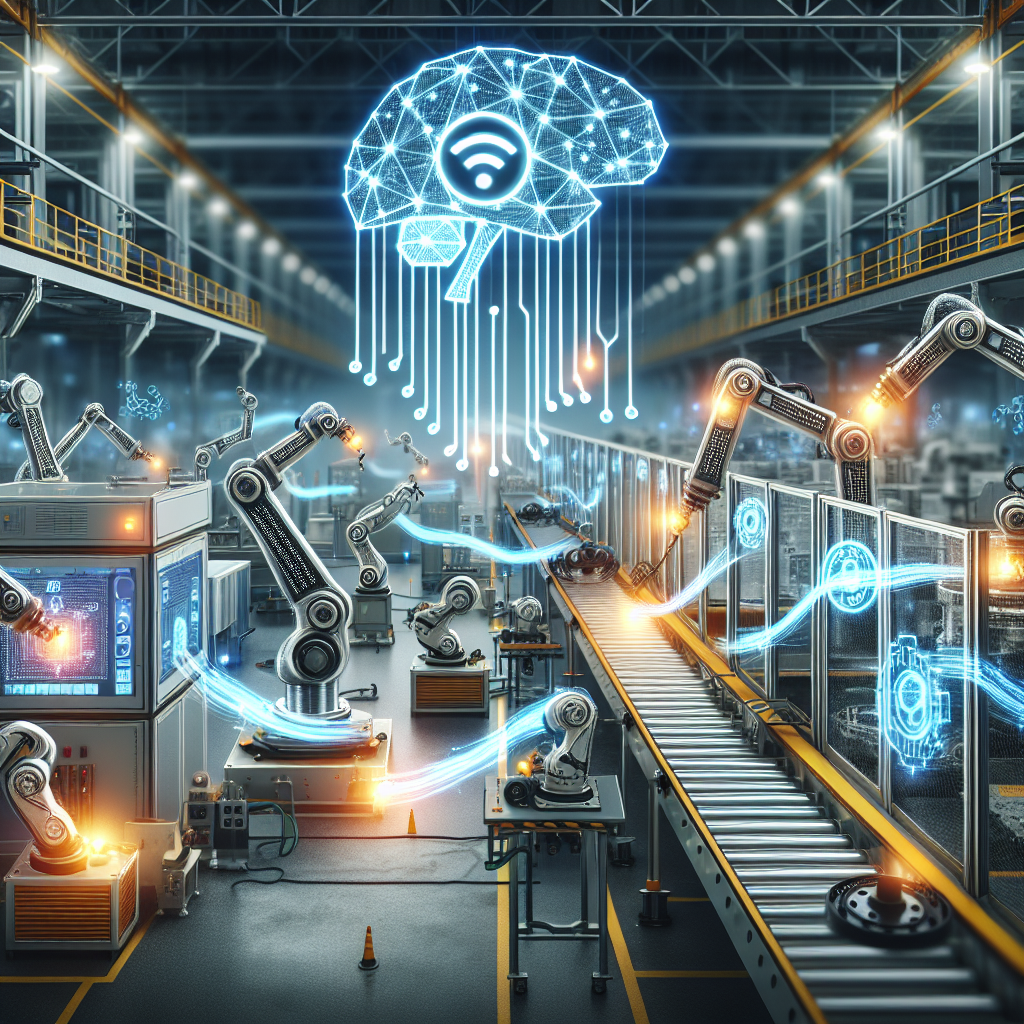The Integration of AI and Industrial IoT in Manufacturing
Introduction
The integration of Artificial Intelligence (AI) and Industrial Internet of Things (IIoT) in manufacturing has revolutionized the way companies operate and produce goods. By leveraging the power of AI and IIoT, manufacturers can optimize their processes, increase efficiency, reduce downtime, and improve product quality. In this article, we will explore how AI and IIoT are being integrated into manufacturing operations, the benefits they bring, and the challenges that companies may face in implementing these technologies.
How AI and IIoT are being integrated into manufacturing
AI and IIoT are two cutting-edge technologies that are transforming the manufacturing industry. AI refers to the simulation of human intelligence in machines that are programmed to think like humans and mimic their actions. IIoT, on the other hand, is the use of internet-connected devices in industrial settings to collect and exchange data.
When AI and IIoT are combined, they create a powerful system that can revolutionize manufacturing operations. By connecting machines, sensors, and other devices to the internet, manufacturers can collect vast amounts of data in real-time. This data can then be analyzed by AI algorithms to identify patterns, predict failures, and optimize processes.
One common application of AI and IIoT in manufacturing is predictive maintenance. By analyzing data from sensors and machines, AI algorithms can predict when a machine is likely to fail and alert maintenance teams to perform preventive maintenance. This helps to reduce downtime and increase the lifespan of equipment.
Another application is quality control. By analyzing data from sensors and cameras, AI algorithms can detect defects in products and alert operators to take corrective action. This helps to reduce waste and improve product quality.
Benefits of integrating AI and IIoT in manufacturing
There are numerous benefits to integrating AI and IIoT in manufacturing operations. Some of the key benefits include:
1. Increased efficiency: By analyzing data in real-time, AI algorithms can optimize manufacturing processes, reduce downtime, and improve overall efficiency.
2. Improved product quality: AI algorithms can detect defects in products early in the production process, leading to higher-quality products.
3. Predictive maintenance: By predicting when machines are likely to fail, manufacturers can perform preventive maintenance, reducing downtime and maintenance costs.
4. Cost savings: By optimizing processes and reducing downtime, manufacturers can save money on maintenance, labor, and energy costs.
5. Competitive advantage: Companies that integrate AI and IIoT into their manufacturing operations can gain a competitive edge by producing high-quality products more efficiently than their competitors.
Challenges in implementing AI and IIoT in manufacturing
While the benefits of integrating AI and IIoT in manufacturing are clear, there are also challenges that companies may face in implementing these technologies. Some of the key challenges include:
1. Data security: With the vast amount of data being collected and analyzed, companies must ensure that their data is secure and protected from cyber threats.
2. Integration with existing systems: Integrating AI and IIoT into existing manufacturing systems can be complex and may require significant investment in infrastructure and training.
3. Workforce training: To fully leverage the power of AI and IIoT, companies must train their workforce to use and interpret the data generated by these technologies.
4. Regulatory compliance: Companies must ensure that they comply with regulations related to data privacy and security when implementing AI and IIoT in manufacturing.
5. Cost: Implementing AI and IIoT in manufacturing can be costly, requiring investment in equipment, software, and training.
FAQs
Q: What is the difference between AI and IIoT?
A: AI refers to the simulation of human intelligence in machines, while IIoT refers to the use of internet-connected devices in industrial settings to collect and exchange data.
Q: How can AI and IIoT benefit manufacturing operations?
A: AI and IIoT can benefit manufacturing operations by increasing efficiency, improving product quality, reducing downtime, and saving costs.
Q: What are some common applications of AI and IIoT in manufacturing?
A: Some common applications of AI and IIoT in manufacturing include predictive maintenance, quality control, and process optimization.
Q: What challenges do companies face in implementing AI and IIoT in manufacturing?
A: Some challenges companies may face in implementing AI and IIoT in manufacturing include data security, integration with existing systems, workforce training, regulatory compliance, and cost.
Conclusion
The integration of AI and IIoT in manufacturing is revolutionizing the way companies operate and produce goods. By leveraging the power of these technologies, manufacturers can increase efficiency, improve product quality, and reduce downtime. While there are challenges in implementing AI and IIoT, the benefits far outweigh the obstacles. Companies that embrace these technologies will gain a competitive advantage in the rapidly evolving manufacturing industry.

